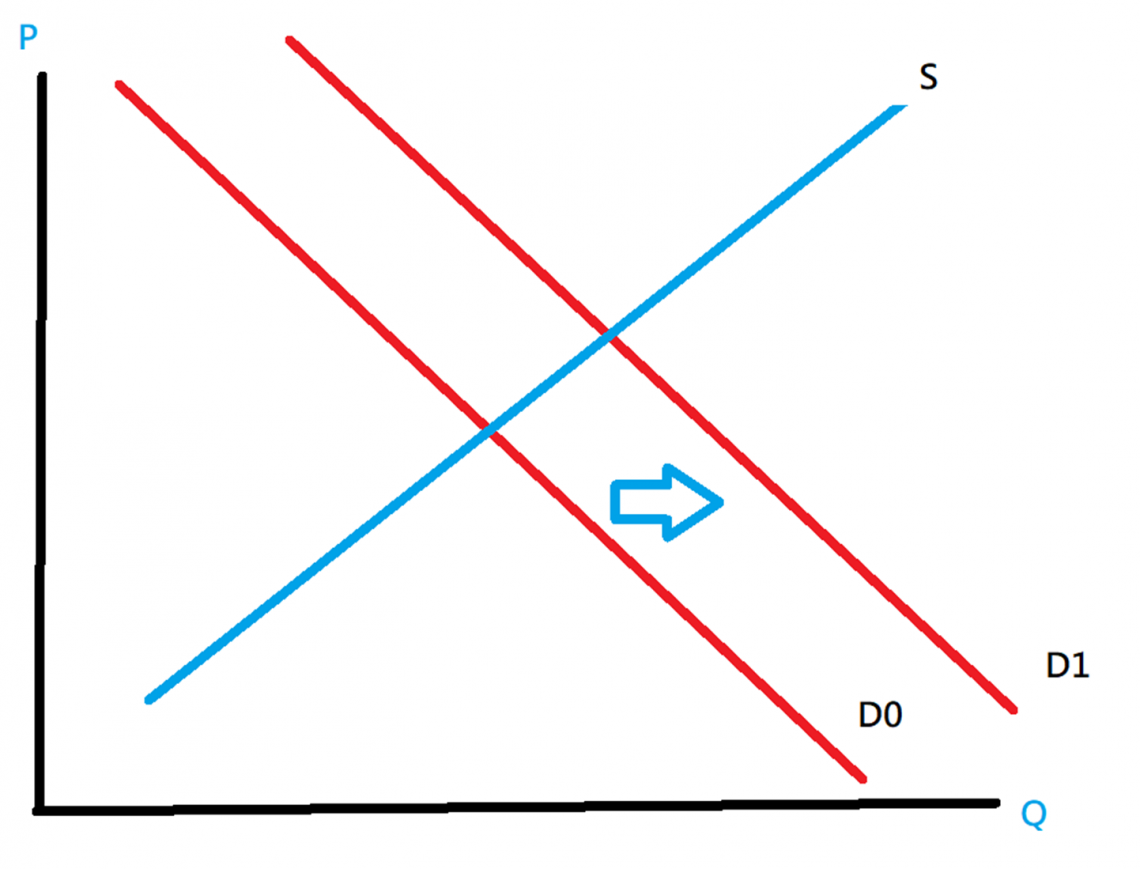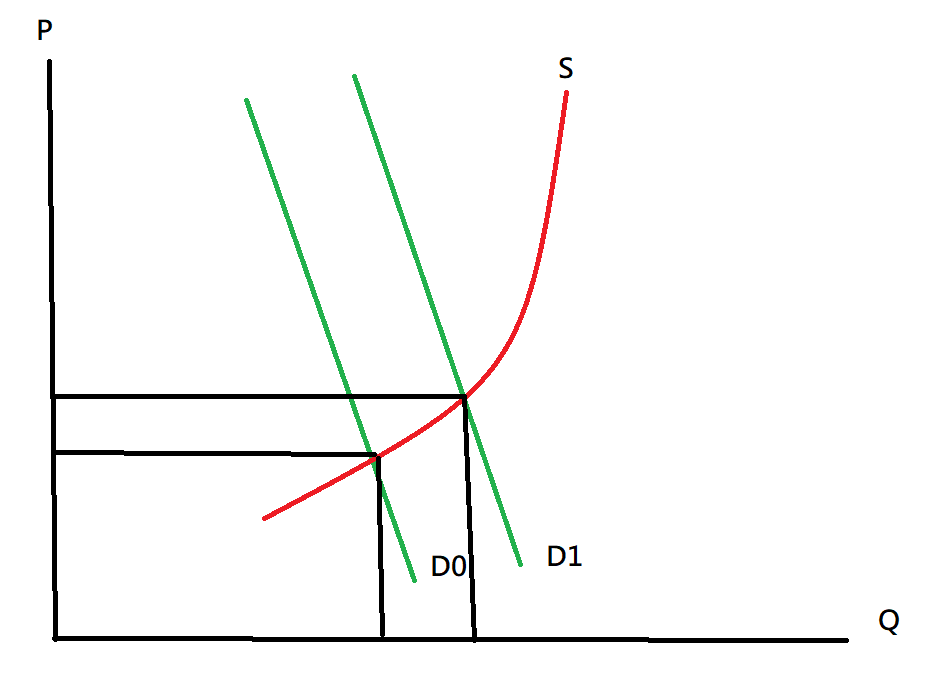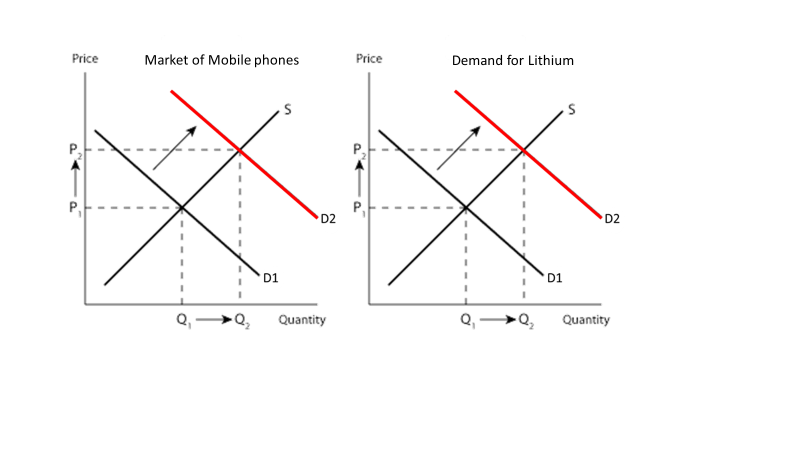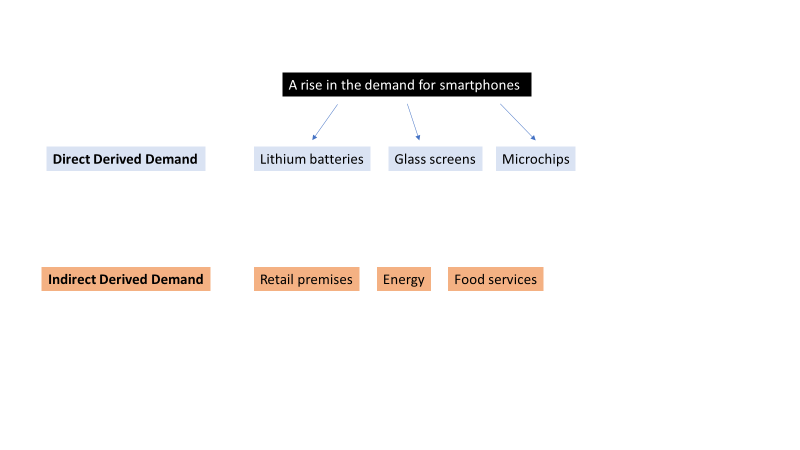Derived Demand
The demand for an item or service derived from the demand for another or related good or service
What Is Derived Demand?
In economics, derived demand is the demand for an item or service derived from the demand for another or related good or service.
Derived demand refers to the demand for a product or service that arises from the demand for another related good or service. Derived demand can significantly influence the market price of the derived product.
Demand generated for anything else is referred to as derived demand. As a result, machinery demand is derived from consumer items that the machinery can produce.
A decrease in demand for consumer products often reduces demand for the machinery required to produce them. For example, spending on new construction projects drives demand for bricks.
Utilizing derived demand to forecast the potential market for goods beyond the primary product of interest can be a valuable investment strategy.
Key Takeaways
- Derived demand refers to the demand for a product or service that arises from the demand for another related product or service, influencing market prices and investment strategies.
- The demand for factors of production like capital, land, labor, and raw materials is influenced by the derived demand for final goods or services, highlighting the interconnectedness of various economic sectors.
- The chain of derived demand involves the movement of raw materials, processed materials, and labor to produce final goods or services, showcasing how demand for one component impacts demand for others.
Understanding Derived Demand
Derived demand refers to the demand for a product or service that arises from the demand for another product or service.
Factors necessary for producing a commodity, including capital, land, labor, and raw materials, can create derived demand. Raw material demand is often inextricably linked to the need for goods.
Predicting the potential market for items beyond the initial commodity can offer valuable insights into investment opportunities based on derived demand.
Moreover, growth in one sector can positively impact other sectors that contribute to its success. Derived demand operates bidirectionally; a decrease in demand for a product leads to a corresponding decrease in demand for the inputs required to produce that product.
Derived Demand Curve
Alfred Marshall developed the concept of the derived demand curve for inputs. Two assumptions are necessary to derive it:
- Production conditions, the demand curve for final goods, and the supply curves for all other production inputs remain constant
- All other inputs and final goods are in equilibrium in competitive markets
The basic graph is:

Given these circumstances, the demand curve provides the quantity, x, of the chosen factor of production desired at a given price, y.
Marshall's derived demand curve for the selected production input is depicted graphically, demonstrating the inverse relationship between x and y, expressed as y = f(x).
The equilibrium price and quantity for the production factor are determined by the intersection of this demand curve with the supply curve.
Low Elasticity of Derived Demand
Low derived demand elasticity is often associated with supply constraints stemming from factors such as the absence of viable substitutes, inelastic demand for the final product, and limited availability of other manufacturing inputs.
The graph is:

The concept of the 'importance of being unimportant' suggests that the chosen production element represents only a small fraction of the total production cost.
In his work, 'The Idea of the Elasticity of Substitution,' John Hicks revisited the assumption of constant production coefficients, highlighting the absence of viable substitutes.
Put simply, the expenditure share of the production element must be relatively small compared to the total production cost only when the elasticity of demand for the product surpasses the elasticity of input replacement.
The Chain of Derived Demand
The chain of derived demand refers to the movement of raw and processed materials, labor, and final products. Raw materials are gathered, processed, and assembled to meet customer demand.
Raw materials, processed materials, and labor constitute the three primary components of derived demand, forming the chain of derived demand, according to economists. Let's discuss these three elements below:
- Raw Materials: These are the fundamental components used in manufacturing products. For example, crude oil is a raw ingredient that produces petroleum products like gasoline. The degree of derived demand for a particular raw material depends directly on the demand for the final product.
- Processed Materials: These are products manufactured from refined or assembled raw materials. Examples include paper, glass, fuel, milled timber, and peanut oil.
- Labor: Labor, or workers, are essential for producing commodities and delivering services. The demand for products and services determines the need for labor. Labor is a component of derived demand because it is only in demand when there is a need for the products or services it helps produce.
Examples of Derived Demand
Derived demand can have cascading effects on both local and global economies, influencing various industries, employees, and consumers. Let's look at some examples of how this works below:
Pick-and-Shovel Strategy
The pick-and-shovel investment approach utilizes derived demand concepts by investing in the underlying technologies necessary to produce a product or service rather than the finished product itself.
It is a means to invest in a sector without dealing with the dangers associated with the market for the finished good. This tactic is known for the equipment used to mine gold during the 1840s and 1850s California Gold Rush.
Prospectors had to buy picks and shovels to mine gold during the California Gold Rush. While there was no guarantee of finding gold, businesses supplying picks and shovels were considered prudent investments due to the high demand for these tools.
They were consequently regarded as sensible investments at that time. The need for gold contributed significantly to the demand for picks and shovels.
The Computer Marketplace
Increasing reliance on computer technology by businesses and consumers upgrading their computing capabilities drives the demand for computers.
As a result, we could observe a generated demand for items like a mouse, displays, external discs, and other computer accessories. There is also derived demand for the raw materials required to manufacture components such as motherboards, video cards, and other internal computer parts.
Mobile Phones and Lithium Batteries
The demand for lithium has surged due to the increased usage of mobile phones and other portable electronics, where lithium batteries are commonly employed.
Let's look at the graph of the demand for both mobile and lithium below:

Where
- P = Price
- Q = Quantity
- S = Supply
- D1 = Demand one
- D2 = Demand two
The increased demand for mobile phones drives greater demand for lithium batteries.

The rising demand for mobile phones also leads to increased demand for components such as glass screens and microchips.
The increased demand for mobile phones indirectly stimulates demand for retail space for their sale. Additionally, there will be increased demand for electricity, transportation services, and possibly food services in the regions where phones are manufactured.
exception to Derived Demand
The low elasticity of derived demand refers to a minimal change in the demand for raw materials resulting from fluctuations in the need for finished goods. This phenomenon typically applies to products made from readily available raw materials.
For example, wool is utilized in coat production. The demand for coats increases during winter and decreases during summer, leading to seasonal fluctuations in the demand for wool.
An exception to derived demand is observed in luxury goods, where demand may not solely rely on the demand for the products they contribute to manufacturing.
Luxury goods often depend on factors like branding, exclusivity, and consumer preferences, resulting in demand that may not be directly correlated with the demand for the goods they help produce.
For example, high-end fashion items may maintain demand regardless of the current demand for the textiles or labor involved in their production, owing to their status symbol value and distinctive market appeal.
Free Resources
To continue learning and advancing your career, check out these additional helpful WSO resources:



or Want to Sign up with your social account?